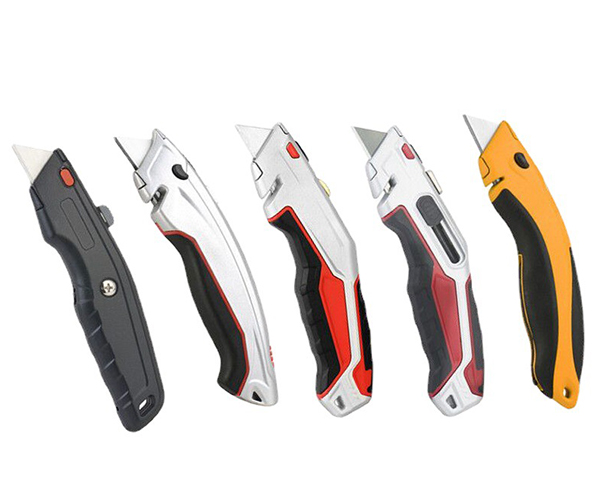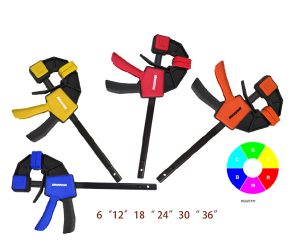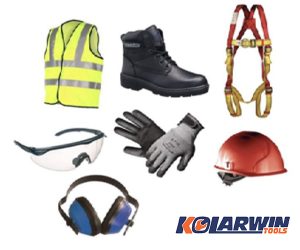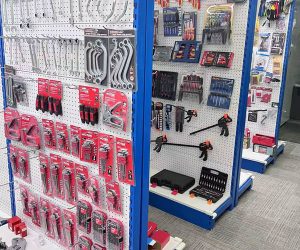When deciding between a box cutter and a utility knife, it’s essential to understand the key differences between the two. Both tools are popular for cutting tasks, but they are designed for distinct purposes. This article will break down the differences, uses, and advantages of each tool to help you make an informed decision. Whether you’re working in the construction industry, crafting, or managing general tasks, understanding which tool to use can increase efficiency and safety.
1. What is the difference between a box cutter and a utility knife?
At first glance, a box cutter and a utility knife may seem similar. But here’s the kicker: they serve different purposes. A box cutter, typically smaller and lighter, is primarily designed for cutting through cardboard and other light materials. On the other hand, a utility knife is more versatile and often used for tougher, more demanding tasks such as cutting wood, plastic, or even drywall.
Box cutters usually have a fixed blade, though some feature retractable blades for added safety. Utility knives, in contrast, often feature a larger, more robust handle and can accommodate thicker, more durable blades. This makes the utility knife suitable for a broader range of tasks, from general-purpose cutting to more specialized applications like roofing or heavy-duty industrial work.
In terms of blade replacements, utility knives are more flexible, allowing for a wider variety of blade types that can be swapped out as needed. Box cutters, while limited to more specialized blades, are often easier to handle and more accessible for quick, light cutting tasks.
Let’s break it down further:
| Feature | Box Cutter | Utility Knife |
|---|---|---|
| Blade Type | Fixed or retractable blade | Replaceable, various types |
| Primary Use | Cutting cardboard, paper | Cutting wood, drywall, plastic |
| Size | Small, compact | Larger, more durable |
| Versatility | Low | High |
| Safety Features | Easy to handle, compact | More robust handle, secure blade lock |
2. What are the common uses for a box cutter?
What’s the real story behind the box cutter? It’s all about simplicity and convenience. The box cutter excels in applications that require quick and clean cuts through thin materials like cardboard, paper, or plastic. In the packaging industry, for example, box cutters are an essential tool for breaking down boxes, opening packages, and trimming excess material.
Another common use for a box cutter is in the arts and crafts world. Many DIYers and crafters rely on the precision of a box cutter to make intricate cuts in paper, foam board, and even fabric. While it may not have the versatility of a utility knife, its lightweight design and ease of use make it an ideal choice for these smaller, more controlled cutting tasks.
A box cutter also comes in handy for office work, particularly for cutting open shipping packages or managing bulk paper. Its portability makes it an easy tool to keep around, and with a retractable blade, it’s safe for storage when not in use.
| Use Case | Box Cutter |
|---|---|
| Industry | Packaging, warehouse work |
| Arts and Crafts | Paper, foam, fabric cuts |
| Office Use | Opening packages, cutting paper |
3. What are the common uses for a utility knife?
Ready for the good part? The utility knife is far more versatile than the box cutter. This tool is built to handle tougher materials and more demanding tasks. It’s used extensively in construction, particularly for cutting through drywall, insulation, and carpet. The utility knife’s sharp, replaceable blades make it the go-to tool for precision cuts in materials that a box cutter simply can’t handle.
But the utility knife’s uses don’t stop there. It’s also favored by electricians for cutting through wires or stripping insulation, thanks to its ability to provide both controlled and deep cuts. Furthermore, in the world of home improvement, utility knives are indispensable for tasks like trimming carpet, roofing, and cutting through plastic or vinyl sheeting.
The versatility of the utility knife is a big selling point, especially for industries and DIYers who need one tool that can tackle a wide range of tasks. This is where it gets interesting: a utility knife is often the better investment if you need something that’s both durable and adaptable.
| Use Case | Utility Knife |
|---|---|
| Construction | Cutting drywall, carpet, and insulation |
| Electricians | Stripping wires, making precise cuts |
| Home Improvement | Trimming carpet, roofing |
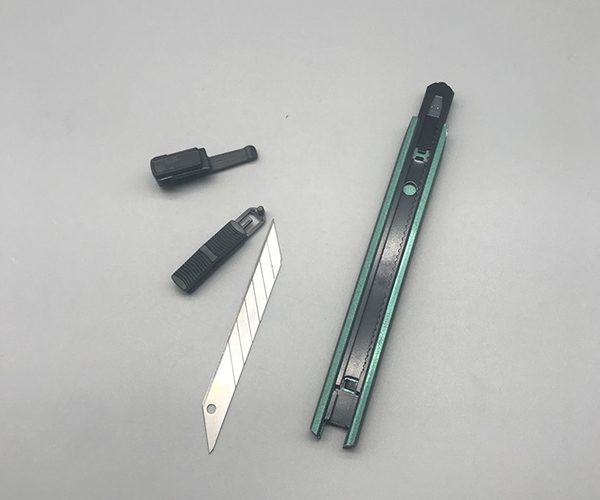
4. Which tool is safer to use: a box cutter or utility knife?
Safety is always a concern when working with cutting tools. The truth is, both box cutters and utility knives are designed with safety in mind, but their safety features differ. Box cutters, with their smaller size and retractable blades, are generally safer for light-duty use. The retractable blade is a key feature that minimizes the risk of accidental cuts, as the blade can be tucked away when not in use. Additionally, box cutters are often easier to handle, especially in confined spaces, making them a great choice for non-industrial tasks.
Utility knives, on the other hand, are built for tougher tasks, which can make them more dangerous if not handled properly. They typically have a more robust construction, and while they feature blade locks for added safety, the larger blades can pose a greater risk in untrained hands. However, when used correctly, utility knives are extremely safe and effective for industrial and professional applications.
The main takeaway here: the box cutter might be the safer option for basic tasks, while the utility knife excels in professional environments where precision and power are paramount.
| Safety Feature | Box Cutter | Utility Knife |
|---|---|---|
| Blade | Retractable | Replaceable, blade lock |
| Handling | Easier to handle for quick tasks | Robust design for tough jobs |
| Safety | More suitable for non-industrial use | Safe with proper handling |
5. What are the blade types for box cutters and utility knives?
Let’s dive into blades. Box cutters and utility knives may look similar, but the blades differ in several key ways. Box cutters usually feature a fixed blade or a retractable blade that is often thinner and smaller. These blades are typically designed for light-duty tasks, meaning they are best for cutting through thin materials like cardboard or paper. However, while the blades may be smaller, they can be quite sharp, making them effective for precision tasks.
Utility knives, in contrast, are designed to accommodate thicker, more durable blades. These blades are replaceable and come in a variety of types, from standard utility blades to specialty blades like hook blades for cutting carpet or serrated blades for tougher materials. Utility knife blades are typically longer, heavier, and can be swapped out depending on the task at hand. This versatility is a major advantage for anyone working in construction, home improvement, or other industrial fields where the material varies.
In this case, it’s clear that utility knives have the upper hand when it comes to blade variety and strength.
| Blade Type | Box Cutter | Utility Knife |
|---|---|---|
| Blade Length | Short, fixed or retractable | Long, replaceable |
| Blade Strength | Thin, lightweight | Durable, thicker |
| Blade Variety | Limited | Wide range of options |
6. How do the ergonomics of a box cutter and utility knife compare?
When considering a cutting tool, comfort and ease of use are crucial factors. A box cutter, being smaller and lighter, tends to be more ergonomic for quick, controlled cuts. Its compact design allows users to handle it with ease, even in tight spaces. The handle of a box cutter is typically made of plastic or rubber, ensuring a comfortable grip for most users.
In contrast, utility knives are built for more extensive cutting tasks, and their larger size can make them slightly less ergonomic for smaller hands or delicate tasks. However, utility knives are designed with a stronger grip and more secure handle to accommodate tougher, longer jobs. Some models even feature ergonomic handles with rubberized grips, making them easier to hold during extended use.
Both tools have their strengths in terms of ergonomics, with the box cutter being more suitable for light, precise work, while the utility knife is designed for durability and long-lasting performance in heavy-duty tasks.
| Ergonomics | Box Cutter | Utility Knife |
|---|---|---|
| Size | Compact, easy to handle | Larger, more robust |
| Grip | Lightweight, comfortable | Strong, ergonomic for extended use |
| Comfort | Suitable for quick tasks | Ideal for heavy-duty tasks |
7. How do box cutters and utility knives differ in terms of blade replacement?
The process of replacing blades varies significantly between box cutters and utility knives. Box cutters, especially those with retractable blades, usually feature a simple mechanism for blade replacement. Most box cutters allow users to snap off the old blade and replace it with a new one with minimal effort. This makes them perfect for quick, easy tasks, as blade replacements are straightforward and don’t require any additional tools.
Utility knives, on the other hand, offer more versatility in terms of blade options, but they also require more effort for blade replacement. Utility knife blades are typically replaced by sliding out the old blade and inserting a new one. Some utility knives come with blade storage compartments or tools to assist with blade changes, but the process is often more involved than that of a box cutter.
The takeaway: box cutters are easier and quicker to replace blades, while utility knives offer more flexibility in blade choices.
| Blade Replacement | Box Cutter | Utility Knife |
|---|---|---|
| Ease of Replacement | Simple, snap-off design | More involved, requires tool |
| Blade Options | Limited | Wide variety of blades |
8. Are box cutters and utility knives both suitable for professional use?
Box cutters are often overlooked in professional settings due to their smaller size and limited cutting capacity. However, for tasks like packaging, shipping, or light industrial work, a box cutter is an invaluable tool. It’s lightweight, easy to store, and incredibly efficient for cutting cardboard and similar materials.
Utility knives, on the other hand, are the go-to tool for professionals in industries like construction, carpentry, or electrical work. Their ability to cut through a variety of materials, combined with their durability, makes them indispensable for tasks that require more power and precision.
In short, while both tools have their place in professional settings, utility knives are the preferred choice for more demanding, heavy-duty jobs.
| Professional Use | Box Cutter | Utility Knife |
|---|---|---|
| Industry | Packaging, light tasks | Construction, electrical work |
9. How do box cutters and utility knives compare in price?
When it comes to price, box cutters are generally more affordable. A basic box cutter can cost just a few dollars, making it an easy choice for businesses or individuals looking for an economical cutting tool. Replacement blades for box cutters are also relatively inexpensive, which makes maintaining them simple and cost-effective.
Utility knives, while more expensive initially, tend to be a better long-term investment. A utility knife can cost anywhere from $10 to $30, depending on the quality and additional features. However, their versatility, durability, and blade options make them a more cost-effective choice for those who need a tool for more demanding tasks. Replacement blades for utility knives are also affordable, but the initial price point can be higher than that of a box cutter.
In summary, box cutters are cheaper upfront, but utility knives offer better value for professionals who need a more versatile tool for heavy-duty use.
| Price Comparison | Box Cutter | Utility Knife |
|---|---|---|
| Initial Cost | Low | Moderate |
| Blade Cost | Low | Low |
| Long-Term Value | Suitable for light tasks | Suitable for heavy-duty use |
10. How do you maintain a box cutter?
Maintenance is key to extending the life of your tools, and box cutters are no exception. The first step is to keep the blade clean and free from dirt or debris. Wipe down the blade after each use to ensure it remains sharp and effective. Additionally, always store your box cutter in a safe place to prevent damage to the blade or handle.
If the blade becomes dull, simply replace it with a new one. Most box cutters allow for easy blade replacement, but it’s important to ensure you’re using the correct replacement blades for the tool.
Lastly, regularly inspect the retractable mechanism, if your box cutter has one, to ensure it’s working smoothly. A well-maintained box cutter will last longer and provide safer, more efficient cutting.
| Maintenance | Box Cutter |
|---|---|
| Blade Care | Clean and replace regularly |
| Storage | Store safely |
| Mechanism Check | Inspect retractable parts |
11. How do you maintain a utility knife?
Utility knives require slightly more maintenance due to their more robust design. First and foremost, always clean the blade after use to prevent build-up that can cause it to become dull or damaged. For extended blade life, consider using a lubricant on the sliding mechanism to ensure smooth operation.
Check the locking mechanism regularly, especially if you’re using a utility knife that features an adjustable blade. If the lock starts to loosen, tighten it promptly to avoid accidents.
Lastly, replace the blades when they become dull or damaged. Depending on the tasks you’re performing, a dull utility knife blade can be a safety hazard.
| Maintenance | Utility Knife |
|---|---|
| Blade Care | Clean and replace regularly |
| Lubrication | Apply to sliding parts |
| Blade Lock | Inspect and tighten as needed |

12. What are the pros and cons of a box cutter?
Box cutters, with their compact size and easy handling, are excellent for light tasks like cutting through cardboard, paper, and other thin materials. They’re highly portable and easy to store, making them ideal for individuals or businesses who need a quick, simple solution for basic cutting tasks.
However, box cutters have their limitations. They lack the versatility of utility knives and aren’t suited for heavy-duty tasks. The blade is also smaller and less durable, meaning it may need to be replaced more frequently.
In short, box cutters are great for specific tasks, but they’re not the go-to tool for everything.
| Pros | Cons |
|---|---|
| Compact and portable | Limited cutting capacity |
| Easy to use | Frequent blade replacement |
13. What are the pros and cons of a utility knife?
Utility knives are highly versatile and can handle a wide variety of materials, from drywall to plastic to wood. They’re more durable than box cutters and can accommodate different blade types for various tasks.
However, their larger size can make them harder to handle for light tasks, and they can be more expensive. Additionally, they require more maintenance, including regular blade changes and inspections of the locking mechanism.
Overall, utility knives are a great all-around tool, but they might be overkill for simple tasks.
| Pros | Cons |
|---|---|
| Versatile and durable | Larger and harder to handle for light tasks |
| Longer-lasting blade | More expensive and requires more maintenance |
14. Which tool is better for precision cutting?
This is where it gets interesting. Box cutters are ideal for precision cutting, especially in small, controlled environments. Their smaller blades and lightweight design allow for delicate, accurate cuts without the risk of damage to the material.
Utility knives, while excellent for tough jobs, are generally not as suited for fine, precise work. Their larger blades and heavier build can make intricate cuts more difficult.
If precision is your primary concern, a box cutter is the clear winner.
| Tool | Precision Cutting |
|---|---|
| Box Cutter | Best for controlled, fine cuts |
| Utility Knife | Better for rough cuts |
15. Can you use a utility knife for tasks typically done with a box cutter?
Yes, you can! While a utility knife might be overkill for some simple tasks, it can certainly handle tasks typically performed with a box cutter, such as cutting cardboard, plastic, and other light materials. The trade-off, however, is that the utility knife’s larger size and heavier design make it less nimble for smaller, more delicate cuts.
In short, a utility knife is versatile enough to handle the same tasks as a box cutter, but it may not be as efficient for those smaller, precision jobs.
| Task | Box Cutter | Utility Knife |
|---|---|---|
| Cutting Cardboard | Ideal | Effective, but overkill |
| Cutting Paper | Perfect for light cuts | Possible, but less precise |
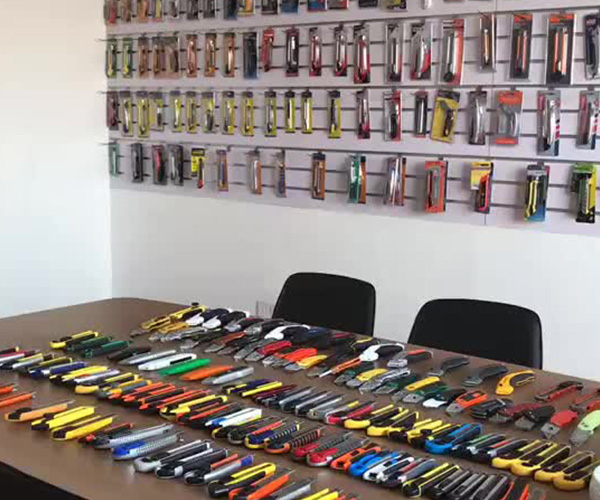
FAQ
Q1: What is the main difference between a box cutter and a utility knife?
A box cutters are smaller, designed for light tasks like cutting cardboard, while utility knives are larger, more versatile, and suitable for tougher materials.
Q2: How does blade replacement work for box cutters and utility knives?
Box cutters allow for easy snap-off blade replacements, while utility knives require sliding out the old blade and inserting a new one.
Q3: Which tool is better for cutting through tough materials like plastic or wood?
Utility knives are better suited for tough materials, with their stronger, replaceable blades.
Q4: Are there any special safety precautions when using a box cutter or utility knife?
Both tools require careful handling, but utility knives need more attention due to their powerful blades and larger sizes.
Q5: Can I use a box cutter for professional tasks like construction or renovation?
While box cutters are ideal for light tasks, a utility knife is a better choice for construction or renovation due to its versatility and durability.

